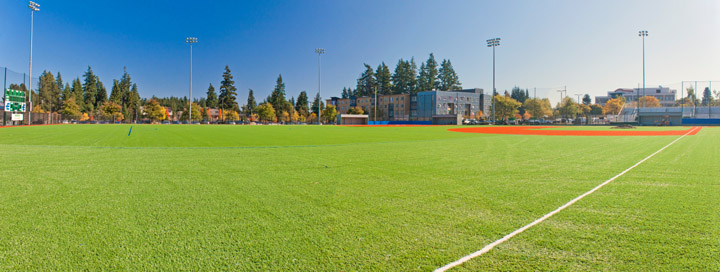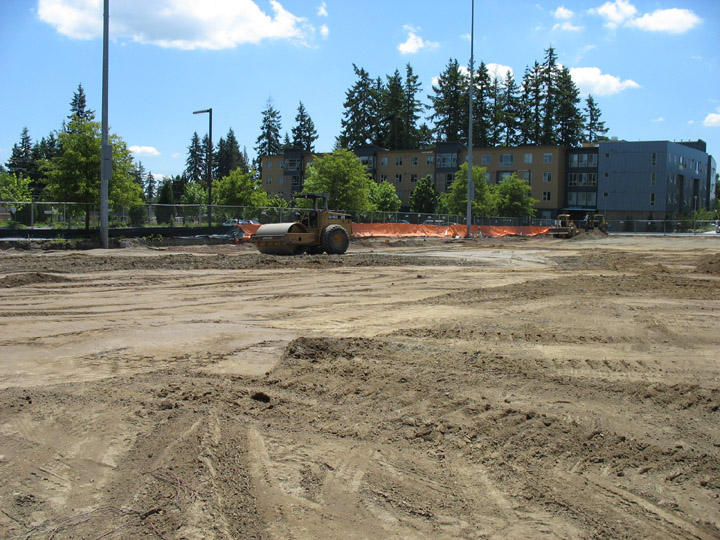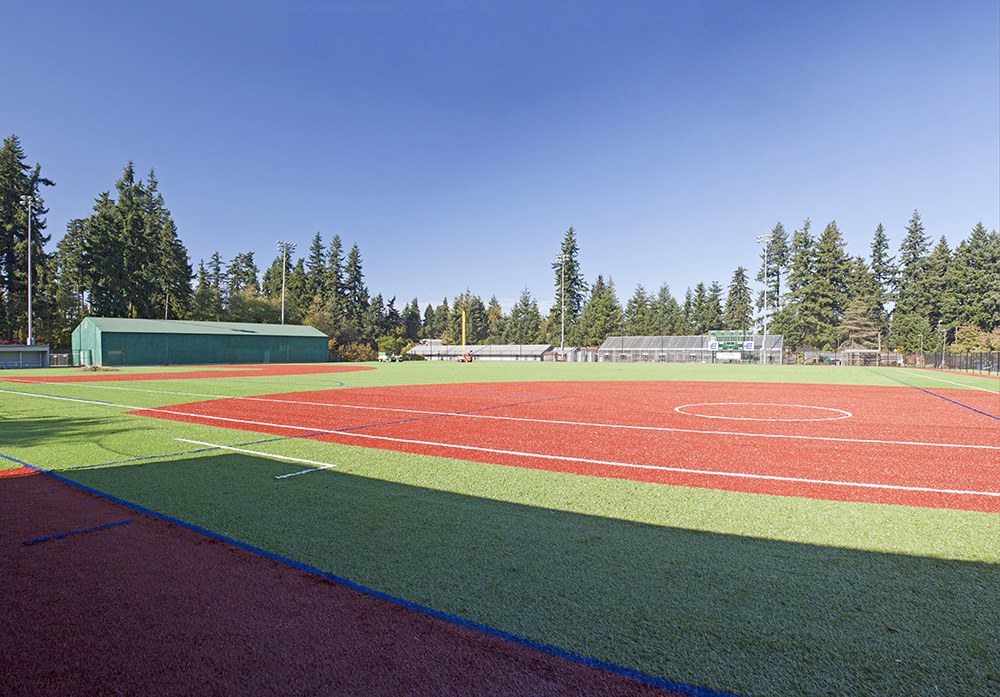Since the first application in 1966 at the Houston Astrodome, artificial turf fields have
become a popular option when constructing a new sports field or renovating an existing field. While the product has improved over the past five decades and there is a plethora of designs and manufacturers to choose from, the reasons for using artificial turf remain constant. Artificial turf fields can be used for many more hours per year than natural grass fields. They can be used mid-winter and after a heavy rainstorm – likely important reasons that many sports fields are going this route here in Washington state.

Site Preparation Considerations
Artificial turf fields consist of a synthetic turf “carpet” that sits on a layer of fine crushed rock with a coarser layer of drainage gravel underneath. Design of artificial turf fields requires close attention to the details of the site preparation.
Construction of artificial turf fields typically occurs in two phases, a site preparation phase where the subsurface rock layers are constructed and a turf installation phase where the turf carpet is installed. A site work contractor performs the site preparation work and then hands the project off to a turf installation contractor. The turf installer will inspect the prepared site and officially accept the site for turf installation.
Installation Tolerances
 Artificial turf manufacturers and installers have strict site preparation requirements for turf sports fields, including tight tolerances for the compaction and smoothness of the fine crushed rock layer and gravel drainage layer and the crushed rock layer that serves as a foundation for the turf carpet. These requirements are much stricter than what is typically required for other site work construction, such as parking lots and landscape areas. Failure of the site work contractor to meet these requirements can cause delays and rework before the turf installer will accept the site for turf installation. A poorly prepared site can lead to the installer refusing to accept the site or the manufacturer voiding the turf warranty.
Artificial turf manufacturers and installers have strict site preparation requirements for turf sports fields, including tight tolerances for the compaction and smoothness of the fine crushed rock layer and gravel drainage layer and the crushed rock layer that serves as a foundation for the turf carpet. These requirements are much stricter than what is typically required for other site work construction, such as parking lots and landscape areas. Failure of the site work contractor to meet these requirements can cause delays and rework before the turf installer will accept the site for turf installation. A poorly prepared site can lead to the installer refusing to accept the site or the manufacturer voiding the turf warranty.
Since the turf carpet “floats” on the layer of crushed rock, any irregularities in the rock surface will reflect through to the carpet surface. The crushed rock layer must be smooth and graded to tight tolerances, free of waves, ridges, or other irregularities that could show on the finished field surface. The rock must be compacted solidly and uniformly in place so that it does not settle after construction but still porous enough to allow rainfall to “sink in” and reach the gravel drainage layer below.
Experience Matters
Designers can reduce the likelihood of problems during field construction by preparing construction documents that clearly define the site preparation requirements and tolerances and the contractor’s responsibility. The construction contract should require the site work contractor to demonstrate experience preparing sites to tight construction tolerances.


